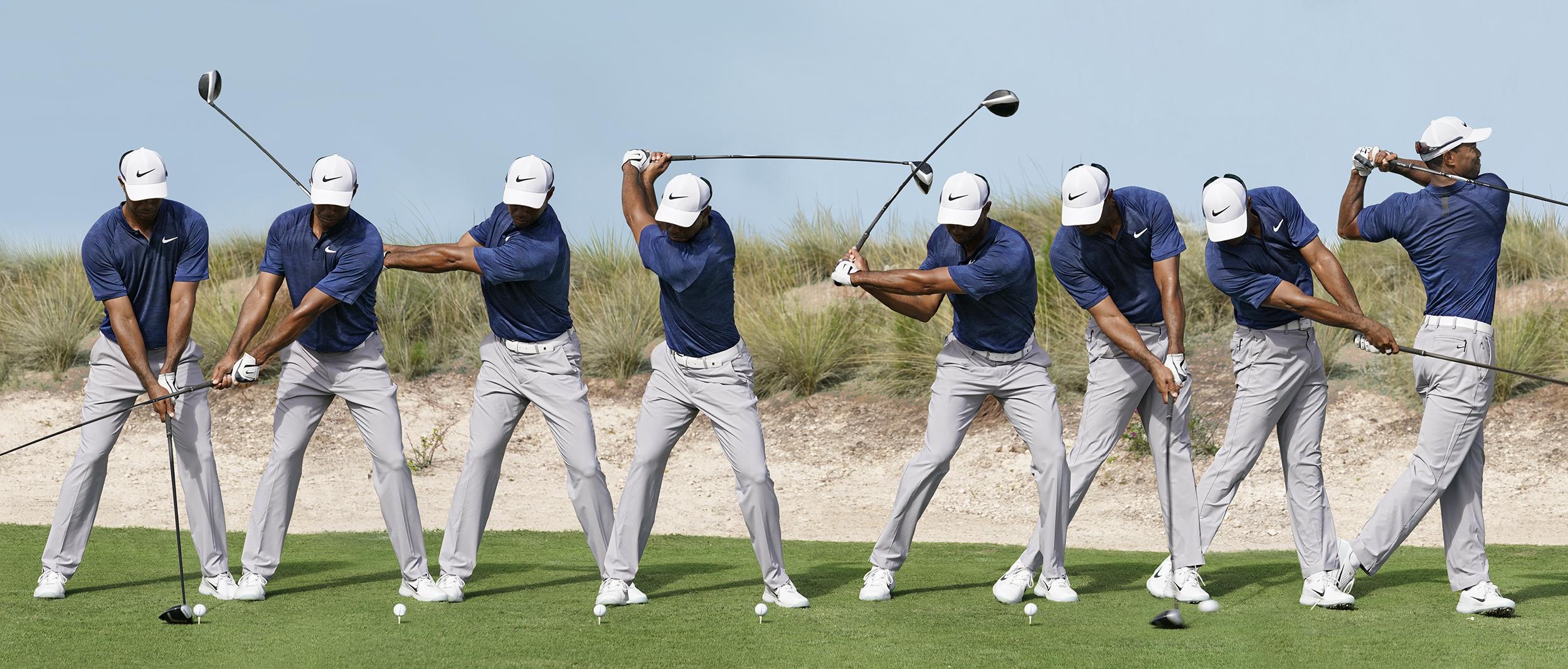
If you're looking to improve your short game, learning how to chip in golf is a key step. It takes practice to get good at it, so you need to be consistent. Avoid speeding through the ball and flicking the ball. You'll also want to practice the right setup, so you don't break your wrists too easily.
You can improve your chipping game and short game.
Your short game is an important aspect of golf. Averagely, you'll hit 40 percent of your shots at the golf course. This does not include your chip shots, bunker shots, and other short shots. The game will be easier to master if you have a great, short game.

Practice makes perfect
Practicing chipping can help you improve your game on the course, but it's important to structure your practice sessions. Your practice sessions will not be productive if you don't have something to aim at. Try this skill with several sizes of clubs to build your distance perception and feel.
Be careful not to flick the ball
Chipping in golf isn't about flinging at the ball. This is a common mistake made by amateurs. Instead, move your head forward while you are shooting. This will ensure a solid, crisp strike. To prevent wrist breaking, keep your elbows and wrists strong.
Accelerating through golf balls
If your chipping is poor, you might want to learn how you can accelerate through the golf ball. This technique allows for you to maintain a consistent speed throughout your shot, so the clubhead can contact the golfball and break through the surface. As you accelerate through the golf ball, it is important to keep your wrists straight as you return the club.
Positioning your body weight over your left foot
One of the most important aspects of chipping is placing your body weight higher than your left foot. This will allow you hit the ball more accurately and allows for better contact. The weight ratio for chipping shots should be 60 percent frontfoot to forty percent rear foot. If you don't keep your feet centered, the weight will transfer to your front foot and the club will not hit the ground.

Use a wedge to chip with your club
A wedge is a great way to improve your distance when playing golf. Although advanced players may prefer a higher lofted clubs for these shots. A lower lofted option is also possible. The ball's position on a green will impact the loft of a club. A higher lofted wedge might be the best option if the ball is only two to three feet from the green and the ground firm.
FAQ
Is there any skill required to play the game of golf?
No. You just need a pair if walking shoes, a towel and some clubs.
What is a bogey, you ask?
A bogey refers to a fictional number that is used as a target by golfers. It is not an actual part of the game. However, it can be used to keep track of scores. The hole is won if the player shoots closest the number.
The concept of a bogey was invented by Jock Hutchison, the first professional golfer from Scotland. The idea was born out of his playing at home.
To keep track of his progress against himself, he put a number on a piece paper and attached it to his wall. This was later called the "Hutchy Bogey."
What time is best to play Golf?
Playing golf between May-September is the best time. This time, it is usually mild and there is no rain.
It can get very cold in winter. Additionally, it can be difficult to walk the fairways when there is snowfall.
In spring and autumn, the grass grows too high, making it hard to see the flagstick.
How do I learn to play golf?
Golf is a skill that takes practice and time. However, it's possible to improve your golf game over time. Here are some tips to help you:
-
Keep practicing. Golf requires constant attention and concentration. Practice is the best way to improve your game.
-
Play with people who know how to play. Playing with other people helps you develop your own style of play.
-
Before you start practicing, read about golf. This will give you an idea about what you need to do.
-
Don't try to master everything all at once. Concentrate on one aspect in your game. For example, focus on improving your putting or learning to chip. Move on to the next area of your game when you feel confident.
-
Take lessons. Take lessons. They can help you improve your posture, swing speed and stance.
-
Try new techniques. Explore new grips, stances, swings and so forth.
-
Keep records. Record your scores and keep track of your progress. You can then see your strengths and weaknesses.
-
Join your local golf club. There are many clubs around that offer free lessons. Many clubs offer free lessons and have helpful members who are willing to help newcomers.
-
Locate a coach. Find a coach who can help you with specific aspects of your game.
What is the game of golf?
Golf is played on 18-hole courses using the Rules of Golf.
The first stroke is taken behind a designated teeing area. Players alternate hitting balls into holes that are at different distances from the teeing area. Each hole contains a specific number of strokes depending on its distance from the teeing area.
There are three types of shots that can be used in the game:
-
A drive shot involves players using clubs to hit and extend the ball. This type of shot is generally considered the most important shot in the game.
-
Players must aim for the ball in a specific area of the hole when they attempt an approach shot.
-
A putt in which players attempt to sink the ball down into the cup through rolling it along with the ground.
The player must finish each hole by making all of his/her putts. For each putt not made, the player loses one stroke.
It is possible for players to choose to play alongside a caddy or partner. This person will be responsible for carrying their club throughout a round. Although the caddie does not have any role in the final outcome, they can offer advice and guidance about strategy and proper etiquette.
Is golfing dangerous?
Even though golf is not considered dangerous, it can inflict injury. For example, you might suffer a broken arm while swinging a club.
But most injuries occur when you fall off your golf car.
Statistics
- They do this by means of assessing and rating courses according to the average good score of a "bogey golfer," a player with a handicap of around 20. (en.wikipedia.org)
- Professional golfers typically make between 60% and 70% of greens in regulation. (en.wikipedia.org)
- They do this by means of assessing and rating courses according to the average good score of a "bogey golfer," a player with a handicap of around 20. (en.wikipedia.org)
- In the United States, the number of people who play golf twenty-five times or more per year decreased from 6.9 million in 2000 to 4.6 million in 2005, according to the [51] (en.wikipedia.org)
External Links
How To
How to Make a Perfect Swing in Golf
A great golfer knows how to play the game and what to do to improve it. He must know when to use various clubs, grips, stances, swings, and techniques.
These are some tips to help you play golf well.
-
Learn the basics first - You have to understand the basic rules of golf before you start practicing your swing.
-
Practice makes perfect. The best way to practice your skills is to go outside and hit the balls at a target. This allows you to get feedback on your form and technique without hurting yourself. As soon as you feel comfortable with the mechanics of your swing, try playing a few rounds of golf.
-
Check your readiness - Before hitting any ball make sure you check your grip and posture. Also, ensure that the distance from the target is accurate. You can adjust if it doesn't feel right.
-
Keep it simple. Don't try and copy another player's swing. Instead, take inspiration from great players such as Tiger Woods, Phil Mickelson or Jack Nicklaus. Because they have perfected their unique style, they are masters at what they do.
-
Use technology - Technology can help you improve your golf game. There are many apps today that can help analyze your swing, track distances, give you tips, and even provide statistics to assist you in making better decisions.
-
Be consistent - When you practice, always keep the following principles in mind:* Work on one aspect of your game at a time. For example, if your goal is to improve your short game skills, you should only work on the short games drills. Mixing long game drills and short games drills is not a good idea.
-
You should only focus on one aspect of your body at time. If you focus on your left arm and work hard, your right arm will be forgotten. This will not help you improve your overall game.
-
Always be honest - Never cheat yourself by lying to yourself. Also, if your self-esteem is higher than it really is, you are cheating yourself.
-
Play with friends. Having fun with others can help you get better at your game. Not only will it help you stay motivated but you'll also find some friendly competition.
-
Recognize your strengths, weaknesses and areas for improvement.
-
Have fun. Enjoy the learning process of golf. There is no such thing "perfect" at any skill. You'll enjoy the journey even if you don't achieve perfection.